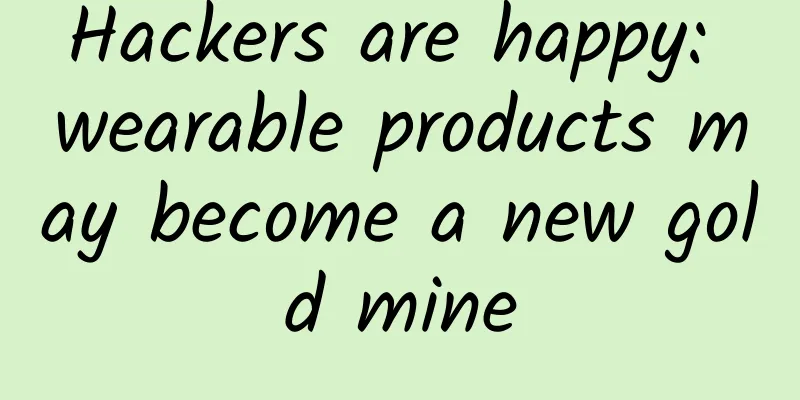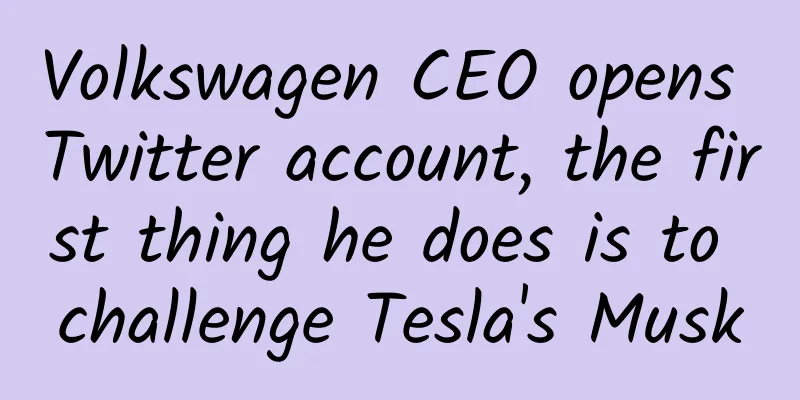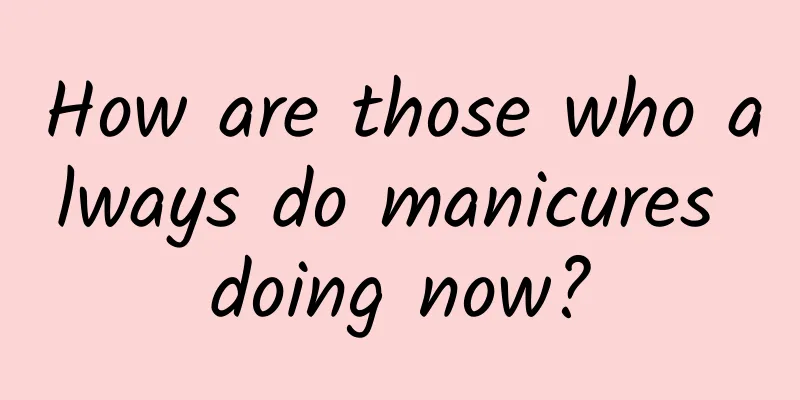How to increase paid conversion of products?

|
As we enter the second half of the Internet , competition in the industry has slowly shifted from competing for user numbers to competing for user stock. Users have more and more choices. In the past, when there was only one or two companies in the industry, they had no choice but to use it. But now, companies are popping up like mushrooms after a rain, and they rush to go online when they hear about a new trend. When users want to use a certain function to solve their needs, they can search in the APP STORE and find dozens or hundreds of options. Therefore, when a company wants to acquire new users, it must polish itself and have a good reputation, rather than launching it first and then slowly iterating. Now is not the past. Users can’t wait for you because there are more fresh choices waiting for them. So when you get a new customer, how to convert him in the fastest possible time is something you need to consider and focus on in this turbulent Internet era. This article will use five steps to improve the paid conversion of your product. 1. Be familiar with the characteristics of the productWe cannot change the product itself, but we have the mission to change its perception in the minds of users. It’s like the “baby” born by a product manager looks like this, but operations need to slowly bring it up and let it show a better side to others. In the process of coming into contact with the product, we need to have a deep understanding of the product itself. Only when you are very familiar with the product can you make a framework diagram for the product and extend it. If it is explained by the "long tail effect", it is also very appropriate. Every product has a mass, general target user group, but this is only the broadest category. However, if you can dig deeper into the product features and extend them to discover other points and markets (such as young people who pursue a sense of technology, trendy men who pursue personalized colors, users who pursue a wrapped feel for their feet, etc.), you will find that the sum of the surrounding extended areas will be larger than the original market, and the users that follow will be more accurate. Among them, whether it is the product's attributes, product functions, product uses and other surface-level things, or the product's development, brand culture, corporate goals, industry standards and trends and other strategic-level things, a comprehensive and in-depth understanding is needed. Take the traditional industry as an example, for example, we sell a certain type of sportswear. We need to understand a few points:
After thinking about these points, you will find that you can understand the general situation of the product from multiple aspects. When a customer comes to you for consultation, based on your understanding of the market and your own products, you can naturally and comprehensively introduce the advantages of your products to encourage users to buy, but this is not enough. 2. Understanding human nature and the mentality of consumersWhen answering questions in an exam, you should first analyze the purpose of the teacher asking the question. Is it to test your understanding of a certain knowledge point, or to test your subjective opinion on the issue? When doing a lucky draw at a Weibo celebrity event, you should analyze why users would forward the message and participate. Is it because the event is interesting and attractive, or the prizes themselves are tempting, or are users just trying their luck and forwarding the message to participate? If an old tree blooms with new flowers, you should analyze why it declined before. Is it because the gameplay cannot keep up with the trend, or is it that the product UI needs to be optimized, or should you pay more attention to the interactive social nature of users? Human nature has always been a point that needs to be focused on and utilized. When your customers come to you for consultation, the chances of closing a deal are higher because they take the initiative. However, rational customers will still compare prices from three stores and think again and again after consulting, and then procrastinate, slowly losing the desire to buy, from a strong desire to a general desire to buy, and then to the desire to buy or not. Procrastination is the biggest common problem; thinking is the biggest obstacle. So don't let the user think too much, let him follow your pace. But you must not be impatient or keep asking questions and selling to customers all at once. Customers will feel pressured and worried. You can’t talk about all the advantages of a product in one breath, otherwise there will be no focus. Just like this lollipop, it only has one feature: sugar-free. All its emphasis is on highlighting this feature. Do you say it has no other advantages? Of course there are, such as fruity flavor, moderate hardness, crystal clear appearance, etc., but it doesn’t say that because it is targeting the sugar-free market. When a customer comes to ask a question, let the customer talk more first. The most worrying thing is that the customer will not speak. The more he asked and expressed, the more information he obtained , and then he extracted key information from this information:
From the above points, we can know a lot of important information. Then we focus on answering questions based on what the user asks. What we cannot do is that when users ask about the wrapping quality of your product, we answer that many celebrities have worn this product and it is fine. This obviously does not directly answer the user's question, but instead gives the user an evasive and deceptive feeling. 3. The connection between product features and consumer needsSociety has become more complex, information has become more noisy, and consumers have become more insensitive and savvy. In the past, when there were no smartphones, you could always go wrong by buying the brand that had the most advertising. But now, it is an era of information explosion, and any media that can spread information is selling its own advertising space . So how can you get users to buy your product directly after listening to your product introduction in an era where advertisements are everywhere and it is easy to compare prices? It is not enough to just be "familiar with the characteristics of the product" and "understand human nature and the mentality of consumers". We need to connect them well, that is, the connection between product characteristics and consumer needs. To be more thorough, it is to grasp the user's purchasing motivation and use a combination of punches to stimulate the user. Only by using these two combinations can you defeat the enemy. But what we need to grasp is that the points you use to stimulate users must be strongly related to the end users' purchasing motivations. When users want to buy our sportswear to experience new technology, we need to emphasize the sense of technology when introducing it, amplify it, and let users follow your pace as much as possible. 4. Go the extra mile to create an experience that exceeds user expectationsWhen you have achieved the first three points, the user may still be hesitant. At this time, you need to put out a "Buy" button to encourage the user to press it. Of course, this button is not imposed by us, but we need to induce users to take this action. It’s like the new retail nowadays. During holidays, I go shopping with my classmates in the mall and find a piece of clothing that I really like, but I’m hesitant about whether to buy it or not. At this moment, I suddenly saw a QR code and a guiding sentence on the side: " Scan the code to enter the Tmall store and get an instant discount of 50 yuan when placing an order!" So I scanned the code decisively to enter the Tmall store. I felt that it was a great deal and I made a profit. So I looked at Tmall while shopping in the mall, bought more clothes, and was successfully converted. New retail is one of the cases, which utilizes scenario-based marketing to allow users to pay more conveniently and quickly, and also to some extent reduces the psychological burden of shopping. Of course, there is another way - to appeal to intangible value. The value of a product is reflected by the sum of tangible value and intangible value. So when consumers want to buy our products, they see more of the tangible value of the products. Take our sportswear for example. What users see is “new technology implantation”, “close-fitting wear”, “stylish matching”, etc. This is very reasonable because this is what we want to show to users (product advantages). But when the user is still in a state of hesitation, we might as well go one step further to create user associations and induce users to press the "Buy" button. We can try to appeal to the intangible value of users. When you put on this sportswear, you will feel the beautiful figure after losing weight. After you buy the same style as the celebrity, more fans of your idol will think you have good taste and want to make friends with you. When you wear this clothes, pants and shoes are easier to match and the combination is more fashionable. In fact, the original intention of users to buy products is the intangible value just written down, but users will not think so much and so deeply when buying products. Therefore, we need to guide and "help" users to remember and tell them that this is the product they want, thereby narrowing the distance between consumers and the target and successfully purchasing the product. 5. Build word of mouth and spread new nodesGood reputation comes from good products and good services. The industry is now becoming more and more homogeneous, with products and services becoming more and more similar. But it is always the details that touch people. Here I would like to share an article titled "I Sell Loquats in My Hometown", which describes in detail how I tried my best to provide the best service when I was selling loquats in the beginning, hoping to impress users. Some people think that as long as my product price is lower than others, I will have good sales and good reputation. In fact, this is not the case. The price of a product should be as equal as possible to the functions and services provided by the product. This way, it is more like an "equal" transaction for both the operator and the user. Frequent promotions with low prices to cater to price-sensitive users in shallow marginal areas actually lose core and targeted users. Word of mouth is actively spread by users. How to maximize its authenticity, reliability, and spreadability, and most importantly, to thoroughly impress users. Don’t use emotional persuasion, because users have too many choices. If the benefits of your product don’t impress me, I will switch to another company. For example, users need clothes - search for clothes online - buy clothes from our store - the clothes are shipped after payment - receive the clothes - wear the clothes when traveling. In fact, each of these six links can be optimized in detail. When users search for sportswear online, in order to make it easier for customers to find good and suitable products (clothes in my store), the keywords of my store are set after multiple user surveys and visits to multiple gyms to interview users, making the search more efficient, accurate and convenient; users will consult before purchasing our clothes, and our customer service will be able to give humane, intelligent and professional answers and recommendations based on the information and questions provided by the users, reducing the decision-making time of users; when users receive the clothes, there will be some small gifts from the store, such as dust bags for the clothes, sports bracelets and other accessories with related attributes, thus creating surprises for users. When users expected 60 points, but we achieved 80 points, this feeling of exceeding expectations will make users share and cheer on their own. A certain user operation concept can also be introduced here, providing more user care for core and seed users , and providing more product-related benefits to marginal users to convert them into precise users. Author: PanGawe, authorized to publish by Qinggua Media . Source: |
<<: If you want to advertise well, these cases are indispensable
Recommend
Breaking down age stereotypes: Five common myths about older people
Source: Science Refutes Rumors...
A brief analysis of the success of Jiang Xiaobai liquor from the perspective of product and operation
What should you do in Chongqing? Eat hot pot? I b...
Humans got whale meat and ivory, but lost valuable clues about cancer
Today we are going to tell you the story of a fem...
Breaking through the limits, electric vehicles accelerate again
With the development of the past year, the world ...
Is ketogenic diet really effective for weight loss?
As the saying goes, if you don’t lose weight in M...
4 tips to improve product conversion rate
You may have heard that FOMO (Fear Of Missing Out...
Where did Didi spend its 3.5 billion US dollars? Jean Liu: Serving the Chinese market
On July 8, Didi Kuaidi announced that it had comp...
Summary of App Store review of financial apps 3.2.1 rejection and 23 other reasons
In recent years, the financial industry has been ...
Electric Technology Car News: It’s all about fun! How many performance cars do you know that are still only available with manual transmission in 2017?
With the continuous development of automobile tec...
Man sues bank after girlfriend secretly shops online
A young man born in the 1980s found that the paym...
Lao Hu's "Taoke Special Training Camp 3rd Period" course video Baidu Cloud download
Lao Hu's "Taoke Special Training Camp Th...
List of "Science" Rumors in May 2023: Can "mouth-sealing patches" cure mouth breathing? Can a person be infected with COVID-19 up to 8 times?
The list of "scientific" rumors for May...
Meiyu Short Video Business School, tips on how to quickly reach 1,000 followers
Meiyu Short Video Business School, tips on how to...
CocoaChina Theme Essay Contest Let's talk about my 2014
In the year 2014, which is about to pass, Apple s...
It is called "soft gold in water" and China now produces it the largest amount in the world!
The golden and slightly charred skin, the soft an...









